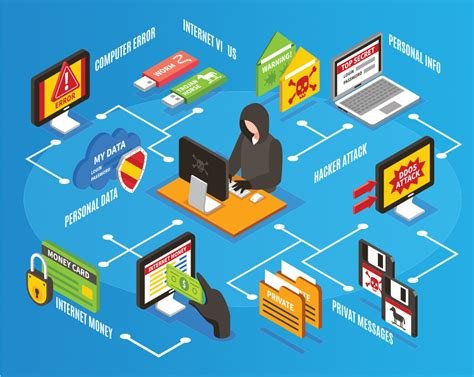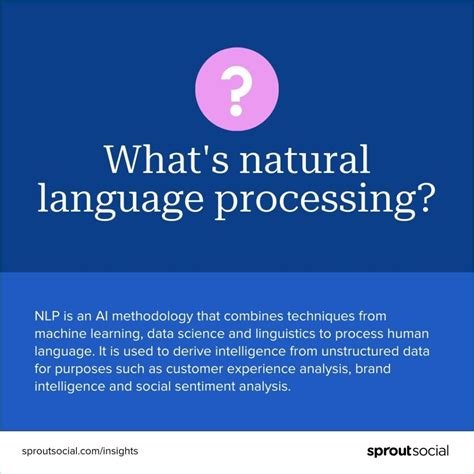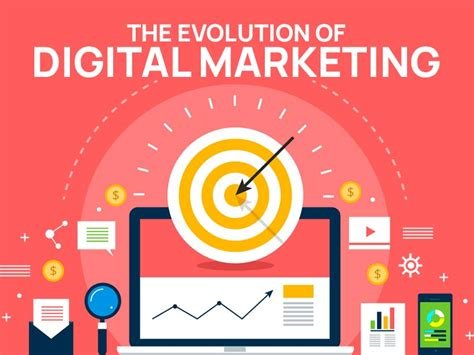In the blog post titled How Data Visualization Tools Can Improve Decision Making, the importance of effectively visualizing data is explored as a critical factor in enhancing decision-making processes. The article discusses how data visualization tools amplify analysis and interpretation of complex datasets, making insights more accessible to stakeholders. It highlights various types of visualization tools available today and outlines best practices for creating impactful visuals. Additionally, the piece emphasizes the integration of data visualization into business strategies, supported by real-world examples of successful applications. It also addresses common mistakes to avoid when utilizing these tools and speculates on the future of data visualization in business decision-making. Key takeaways summarize effective practices for maximizing the benefits of data visualization tools, reinforcing the crucial role of these resources in driving informed decisions within organizations. Understanding how data visualization can transform information into actionable insights is paramount for modern businesses.
Understanding The Importance Of Data Visualization In Decision Making
Data visualization is a powerful tool that plays a crucial role in the decision-making process. By transforming complex data sets into visually digestible formats, organizations can gain insights that would otherwise remain obscured within raw numbers. This process not only enhances the clarity of information but also prompts quicker and more informed decisions. In today’s data-driven world, understanding how data visualization impacts decision making is essential for businesses aiming to stay competitive.
One of the main advantages of data visualization is its ability to reveal hidden patterns and trends. Decision-makers are often inundated with vast amounts of data, making it difficult to identify actionable insights through text or spreadsheets. Visualization techniques, such as charts and graphs, enable stakeholders to quickly grasp the essence of the data, fostering deeper insights. Furthermore, visual tools can facilitate collaborative discussions around data, ensuring that all team members are aligned and informed.
- Key Benefits of Data Visualization
- Enhances understanding of complex data sets.
- Facilitates quicker decision-making processes.
- Uncovers trends and patterns easily.
- Boosts collaboration among team members.
- Improves engagement with data presentation.
- Enables real-time data analysis.
Moreover, the impact of data visualization extends to improving stakeholder communication. When business data is communicated through visually appealing formats, it is more likely to capture attention and maintain engagement. This effective communication theory is vital, especially when presenting to non-technical stakeholders who may not be familiar with the underlying data. In essence, the art of visualizing information not only conveys facts but tells a compelling story that can influence decisions at all organizational levels.
In summary, understanding how data visualization enhances decision-making capabilities is fundamental for organizations looking to leverage their data effectively. By embracing visualization tools, businesses can not only derive better insights but also foster a culture of informed decision-making that drives growth and success.
How Data Visualization Tools Enhance Analysis And Interpretation
Utilizing the right data visualization tools can significantly enhance analysis and interpretation processes, transforming how organizations comprehend their data. By employing sophisticated visual formats, decision-makers can reveal insights that may not be immediately apparent from raw data. This functionality allows businesses to grasp intricate patterns, trends, and correlations essential for informed decision-making.
Moreover, how data is presented plays a critical role in shaping the audience’s understanding. By turning complex datasets into easily digestible visual formats, such as graphs and charts, teams can communicate results effectively. Visualizations not only make data comprehensible but also enable stakeholders to retain information better, fostering a data-driven culture within the organization.
- Steps To Utilize Visualization Tools
- Identify the key objectives of the data analysis.
- Select appropriate visualization tools based on objectives.
- Gather and clean the relevant data for accurate representation.
- Create various visualizations to explore different insights.
- Review and refine visualizations for clarity and impact.
- Share findings with stakeholders to facilitate informed decisions.
- Gather feedback to improve future visualizations.
In summary, leveraging data visualization tools provides companies with a competitive edge by improving their analysis capabilities. The enhanced interpretation allows for quicker reactions to market changes and better strategic planning. As a result, organizations not only save time but also boost overall productivity, ultimately driving their success in an increasingly data-centric world.
Types Of Data Visualization Tools Available Today
Understanding the various types of data visualization tools is crucial for improving decision-making processes. These tools help convey complex data sets in an easily digestible format, promoting better insights and quicker conclusions. By utilizing data visualization, businesses can communicate findings with clarity, ensuring that stakeholders understand the essential data points that drive decisions. Therefore, it is vital to explore the different forms of visualization available, each catering to specific types of data and analyses.
Common Visualization Tool Categories
- Bar Charts
- Pie Charts
- Heat Maps
- Line Graphs
- Scatter Plots
- Infographics
- Dashboards
Each visualization type serves a distinct purpose and is suitable for various datasets. Selecting the appropriate tool is essential for precise representation, analysis, and interpretation of data. The choice often depends on the nature of the information being presented and the insights that need highlighting. Utilizing a combination of these tools can further enhance the overall narrative that the data communicates.
Bar Charts
Bar charts are one of the most straightforward and effective visualization tools. They utilize rectangular bars to represent data values and are particularly useful for comparing different categories. With bar charts, viewers can quickly identify trends, differences, and outliers within the data. For decision-making, this can translate into visual summaries that inform strategic choices based on comparative analysis.
Pie Charts
While pie charts are often used to show proportional data, they can effectively illustrate how individual segments contribute to a whole. This visualization type is ideal when dealing with a limited number of categories, providing stakeholders with an immediate visual insight into the distribution of values. However, caution should be exercised as too many slices can make pie charts difficult to interpret.
Heat Maps
Heat maps are advanced visualization tools that utilize color gradients to represent data intensity across two dimensions. This form of visualization is particularly useful in identifying trends and patterns that might be less visible in traditional charts. The vibrancy of the colors helps draw attention to anomalies or insights, making them exceptionally powerful when making complex decisions based on geographical or structured data.
Best Practices For Creating Effective Visualizations
Creating effective visualizations is an essential component when discussing how data can influence decision-making processes. The representation of data through visual means allows decision-makers to comprehend complex information swiftly and accurately. Therefore, understanding the nuances of effective visualization techniques is critical for any data-driven approach in organizations. A well-structured visualization does not merely present data; it tells a story that aids stakeholders in making informed choices.
To achieve this, various best practices can be implemented to enhance the clarity and impact of visualizations. A strong visualization should be designed thoughtfully to minimize misinterpretation and maximize insights. Utilizing appropriate charts, graphs, and colors is crucial to ensure the data is not only engaging but also easy to understand. Incorporating dynamic elements like interactive dashboards can further enrich the viewer’s experience, allowing for deeper exploration of the data.
Top Guidelines For Creating Visualizations
- Define the purpose: Clearly outline the goal of your visualization.
- Know your audience: Tailor the complexity and design based on who will view your data.
- Choose the right format: Select charts or graphs that effectively represent your data.
- Simplify design: Avoid clutter to highlight the key messages.
- Use color wisely: Limit your color palette to enhance readability.
- Label clearly: Ensure all components are labeled for better understanding.
- Incorporate interactivity: Where applicable, allow users to engage with the data.
Each of these guidelines serves as a foundation for crafting visualizations that not only present data but also enhance its consumption. When adhered to, these practices ensure that viewers are not overwhelmed but rather empowered to draw conclusions and make decisions based on the data presented. In summary, by leveraging these best practices for creating effective visualizations, organizations can significantly improve their decision-making capabilities through enhanced data interpretation.
Integrating Data Visualization Into Business Strategies
Incorporating effective data visualization into business strategies is crucial for enhancing decision-making processes. When teams can strong understand and interpret their data through visual means, they are better positioned to derive insights that drive results. Utilizing data visualization not only aids in the clarity of data presentation but also fosters a culture of data-driven decision-making within organizations.
To achieve successful integration, businesses must first identify the steps that align with their specific objectives and needs. With various tools available, organizations must carefully evaluate them based on their ability to present complex information in an easily digestible format. This approach not only enhances understanding but empowers teams to make informed decisions grounded in data analytics.
Key Steps For Integration
- Assess business goals and data requirements.
- Select appropriate data visualization tools.
- Train staff on utilizing the chosen tools effectively.
- Create clear and relevant visual representations of data.
- Encourage collaborative reviews of visual data insights.
- Continuously refine strategies based on data feedback.
- Monitor tools for updates and improvements regularly.
These steps ensure a framework through which organizations can systematically approach strong data visualization integration. Furthermore, businesses must prioritize ongoing education and adaptation to new trends in data visualization. As technology evolves, remaining agile is essential for maximizing the potential of data insights.
Ultimately, integrating data visualization into business strategies is not just about adopting tools; it’s about fostering an environment where data-driven insights become a standard part of the decision-making framework. Implementing this integration effectively can lead to significant improvements in outcome accuracy, operational efficiency, and achieve overall business goals. In turn, organizations will cultivate a competitive edge in their respective industries.
Real-World Examples Of Successful Data Visualization
Data visualization plays a pivotal role in simplifying complex datasets, allowing organizations to make informed decisions based on clear and actionable insights. By leveraging visual tools, businesses can translate intricate information into stories that resonate with stakeholders, fostering better understanding and collaboration. One of the key aspects of how data visualization influences decision-making is through practical examples that demonstrate its effectiveness across various industries.
Organizations that have embraced data visualization have seen measurable improvements in efficiency and decision-making outcomes. For instance, companies can quickly identify trends, opportunities, and anomalies that would be overlooked in traditional data formats. The ability to present data visually enhances communication, ensuring that every team member is aligned and can contribute to data-driven strategies.
“Visualizing data is not just about aesthetics; it’s about sharing insights that drive action.”
Here are some notable case studies in visualization showcasing successful applications of data visualization:
- Netflix: Utilized data visualization to analyze viewer preferences, refining its recommendation algorithms and boosting customer engagement.
- Spotify: Developed visual dashboards to track music trends, enabling more targeted marketing strategies and improved user experience.
- American Express: Implemented visual analytics to detect fraudulent transactions quickly, significantly enhancing their fraud detection capabilities.
- The New York Times: Leveraged interactive data visualizations in their reporting, allowing readers to engage deeply with the information presented.
- NASA: Created stunning visual representations of satellite data, aiding in public understanding of climate change and significant earth sciences.
- Gapminder: A non-profit organization that uses visual tools to represent global development data, making complex statistics accessible to all.
- Salesforce: Offers comprehensive dashboard features for businesses to track sales performance, driving strategic decision-making.
These examples highlight the transformative power of effective data visualization and its influence on good decision-making. Organizations that harness the potential of how data visualization can propel their operations forward by not only presenting data but also encouraging actionable insights that drive results.
Common Mistakes To Avoid When Using Data Visualization
In the realm of decision making, data visualization plays a critical role in making information accessible and comprehensible. However, many users often fall into common pitfalls that can lead to misinterpretations and ineffective communication. Awareness of these potential errors is essential to harness the true power of data visualization effectively. When focusing on How Data is presented, eliminating mistakes can significantly enhance the decision-making process.
One major mistake is overcomplicating visualizations. When users crowd a single chart with excessive data points, it can confuse rather than clarify. Instead, it’s important to prioritize simplicity and clarity by presenting only the most relevant data. Moreover, failing to choose the right type of visualization for the data can also lead to miscommunication. For example, using a pie chart for categorically unequal data may not provide the most effective representation.
Critical Errors To Watch Out For
- Overloading visuals with excessive data points.
- Choosing inappropriate chart types for the data.
- Neglecting to provide context or explanations for the data.
- Using misleading scales or axes.
- Ignoring color choices and their implications for interpretation.
- Not considering the audience’s perspective or level of understanding.
- Failing to update visualizations as new data becomes available.
Another critical issue is neglecting to provide adequate context. Visualizations devoid of background information can misguide viewers on the implications of the data displayed. By providing context, users can enhance the narrative that the data aims to tell. Additionally, the choice of colors often goes overlooked, leading to misinterpretations or unintended biases. Proper color usage not only improves aesthetics but also aids in cognitive understanding, making the data easier to digest.
The Future Of Data Visualization In Business Decision Making
The ability to leverage data visualization is becoming increasingly vital in business decision-making contexts. As organizations strive to gain competitive advantages, understanding how data can be transformed into insightful visual representations will play a pivotal role. This evolution goes beyond mere aesthetic enhancement; it directly impacts strategic outcomes by facilitating better comprehension of complex data sets.
Emerging technologies and innovative trends are shaping the future of data visualization, making it more accessible and efficient. The integration of artificial intelligence and machine learning is enabling automated insights that empower stakeholders to make swift decisions. Furthermore, interactive dashboards are moving to the forefront, allowing decision-makers to manipulate data actively and gain real-time insights into their operations. These trends signify that the way businesses communicate insights will dramatically shift.
Upcoming Trends And Technologies
- Increased use of AI for predictive analytics
- Real-time data visualization tools
- Enhanced interactivity in visual reports
- Integration of augmented and virtual reality
- Focus on data storytelling to engage stakeholders
- Cloud-based platforms for improved collaboration
- Data democratization for widespread accessibility
The future landscape will likely see a collaborative approach to data visualization where teams across various departments contribute to and interpret data findings collectively. This not only fosters a culture of data-driven decision-making but also ensures that valuable insights are not confined to specific roles. With the right tools in place, organizations can harness the collective intelligence of their workforce to visualize and analyze data more effectively.
In conclusion, as businesses navigate the complexities of today’s data-rich environment, they must adapt by incorporating advanced data visualization techniques into their decision-making processes. The successful application of these tools hinges on recognizing their potential and understanding how data can be visualized to unlock actionable insights. Forward-thinking companies that stay ahead of these trends will position themselves for greater success in the marketplace.
Key Takeaways For Effective Data Visualization Practices
To enhance organizational decision-making, it is crucial to understand and apply effective data visualization practices. When we discuss How Data visualization can transform the way stakeholders interpret complex information, it becomes evident that clarity, efficiency, and insight can significantly improve outcomes. Utilizing visualization tools empowers teams to present data in a manner that is both engaging and informative, which facilitates quicker and more accurate decisions.
One of the essential aspects of effective data visualization is selecting the right type of chart or graph that represents the underlying data accurately. This includes understanding the audience and their needs, ensuring that the visualizations are not only appealing but also serve a clear purpose. For instance, bar charts might be ideal for comparing quantities, while line graphs are often suited for displaying trends over time. Tailoring visual elements can make a huge difference in communicating important information effectively.
Actionable Steps To Implement Today: 1. Identify your audience and their data needs. 2. Choose the right visualization type based on your data. 3. Utilize color and fonts that enhance readability. 4. Simplify complex information into digestible visual formats. 5. Incorporate interactive elements to engage users. 6. Test visualizations with real users for feedback. 7. Continuously update and refine visualizations based on new insights.
Ultimately, the goal of effective data visualization is to empower decision-makers with the insights they need, leading to more informed choices that can drive business success. By implementing these practices, organizations can foster an environment where data is accessible and actionable. Remember, when performing data visualizations, clarity is your best ally; ensuring the information is conveyed without confusion will not only engage your audience but also ensure that decisions are based on accurate interpretations of the data.









